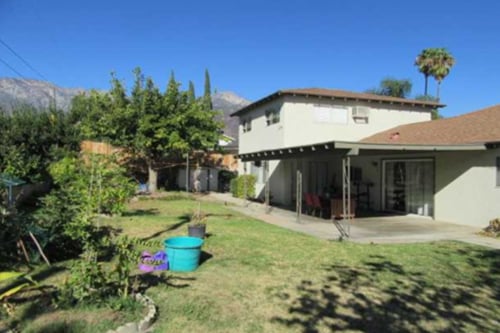Whether you are buying a property for yourself, or plan to use it for investment, it’s paramount to have accurate costs

Before purchasing a property, one of the most important things someone can do is estimate any construction or rehab costs.
It is much easier to estimate the cost of brand new construction from the ground up because we can use a rough order of magnitude or cost per square foot model, but if you are doing a renovation or rehab, there are many more things to consider. One of the easiest and quickest ways to get costs for a construction project is to hire a construction takeoff and estimating company they can give you accurate numbers for your project.
Here are the different methods and steps you need to take to calculate costs before you purchase your property.
Create drawings, specifications, and a scope of work
In construction, we use the drawings as our contract drawings along with the scope of work, which lists out every single item that will be covered in the proposal.
A scope of work is typically used as a supplementary document to the drawings. This lists out the specific responsibilities the contractor will include in the estimate. Specifications are very detailed responsibilities the contractor also included in the estimate. These are requirements such as additional characteristics for materials, product selection, methods of installation, and even list allowances when certain parts of the project have not been determined.
Any local architect that is licensed can produce quality architectural drawings for the contractor.
One of the mistakes many investors or owners make is trying to rush through this process—or even bypass it—by just telling their contractor what they want done. This can quickly result in additional costs unforeseen to both the owner and contractor.
Get bids from contractors
Once you have the construction drawings ready, you are going to want to get preliminary bids or estimates from your contractor. This is the most accurate method to determine the cost of your renovation because you’re getting a legally binding proposal from your contractor.
But what happens when you don’t have complete drawings?
The best remedy to this is going to be to get the contractor to visit the property and give you a cost based on a walk-through and their own measurements. As the owner, you can quickly write up a scope of work of the items you’d like in your proposal.
Use a cost database
If you are a little bit more technically inclined, you can speed up the process by using a cost database like RSMeans or Craftsman National Construction Estimator database. The cost databases will give you a very detailed pricing for things like concrete work, framing, drywall, painting, flooring, and any other type of work that you will be performing in your renovation.
When you create your cost spreadsheet, it’s important that you built in 10% as a miscellaneous or contingency fund to cover unforeseen additional costs. Every single project has something known as change orders, which are additional costs for work outside of the agreed-upon contract. By adding 10% to your budget, it makes sure you have enough money to cover these unforeseen circumstances and still be profitable.
You should never undergo a new construction or renovation project with very tight margins because the unexpected inevitably happens, and you can easily lose money if you under budget your project.
Estimate rough cost per square foot
If you are going to be doing a new commercial or residential construction project, it’s easy to determine the cost per square foot so you can determine what the cost will be before you even have drawings. New construction projects for residential are typically in the $150 per square foot range, and new construction commercial is usually in the $175 per square foot range. This will vary dramatically, however, based on labor rates around the country.
One method is using area modifiers from the National Construction Estimator database to determine cost differences in labor and materials based on the project zip code, but there are other ways of doing it as well without that software.
ZipRecruiter, for example, has the going rate for carpentry labor (somewhere around $29/hr). Divide $29 / $25 and that will give you a multiplier of 1.16. The going rate for labor is 16% higher than the national average in this example.
The rule of thumb is to take the $150/sq. ft. residential estimate and divide it in half, so you are left with approximately $75 each for labor and materials. Materials typically only fluctuate a little. The biggest fluctuation and cost per square foot pricing is the labor.
In this instance, multiply your labor of $75 by 1.16 to get $87. Add that to the materials cost of $75 and you’ll have your rough cost per square foot for your new construction project: $162 per sq. ft.
You can do the same thing with commercial by using $175 as your base rate.
Keep in mind that there are things that can inflate your price such as expensive exterior or interior finishes. Working with a particularly difficult and/or complex structure will raise the price.
Determining your cost per square foot or your renovation costs are one of the most important things you can do when looking into purchase a property. Even having a rough idea before you close the deal can help avoid any expensive and unexpected surprises later down the road.
Daniel Quindemil is the founder of I AM Builders, and he is a construction estimating consultant specializing in helping contractors and developers build and manage projects. He has managed projects for the University of Miami, Bacardi, and other private investors.



